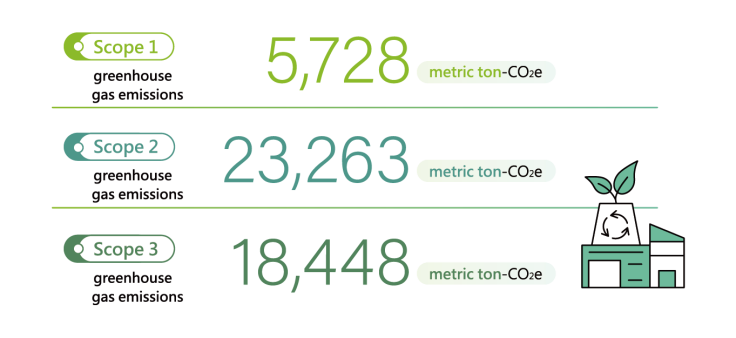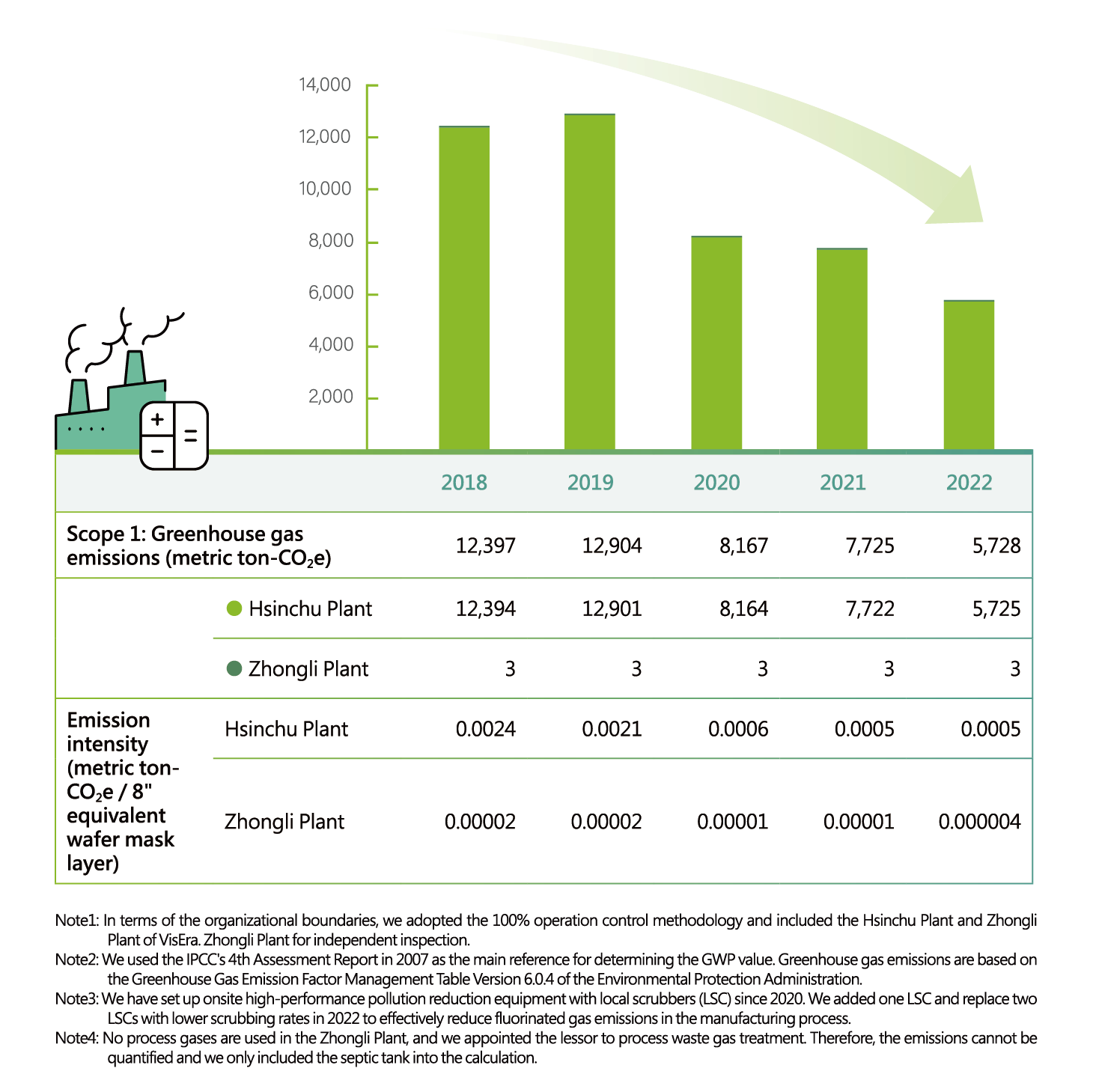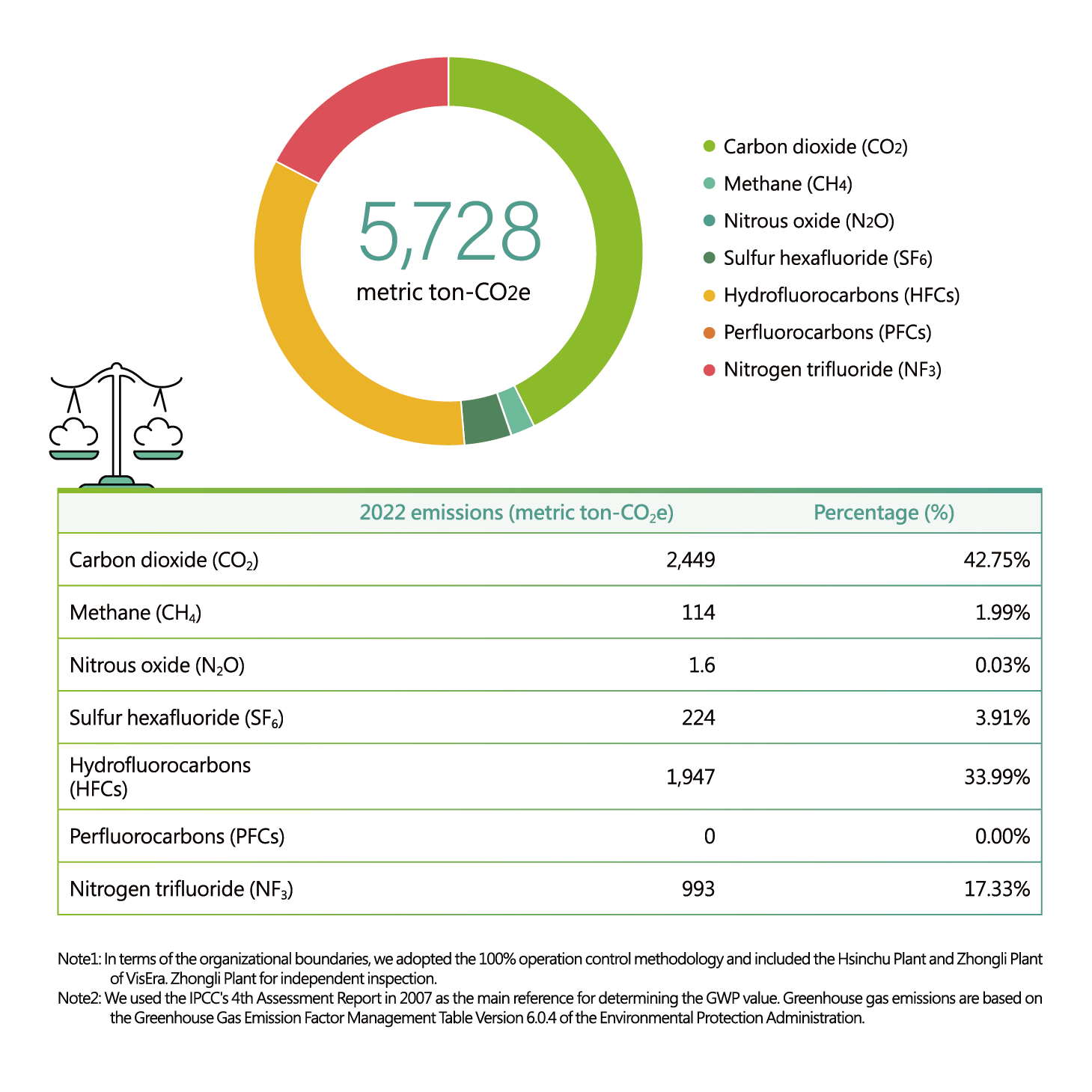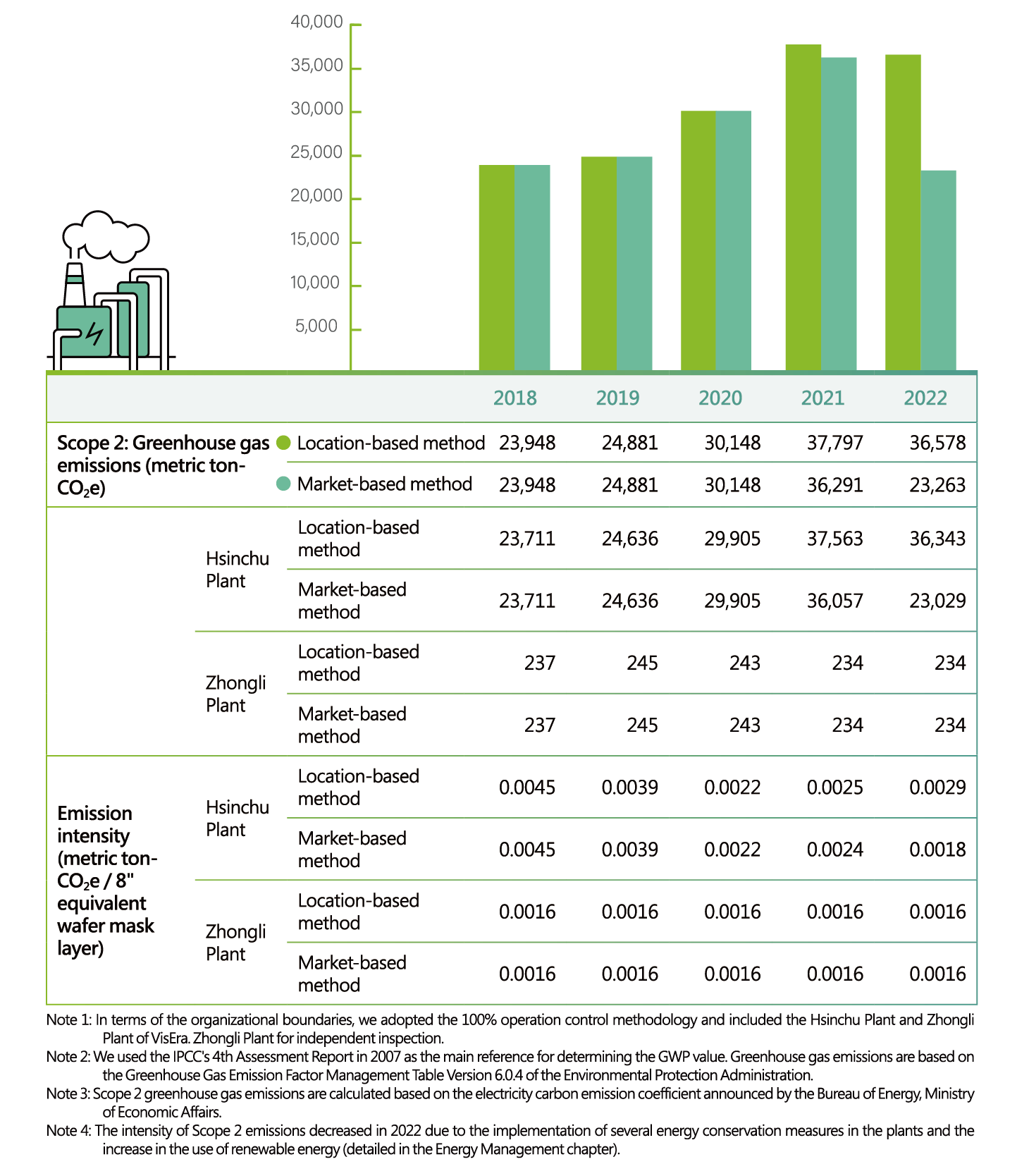VisEra established a voluntary greenhouse gas inventory system in 2013. We referenced ISO 14064 standards and the WBCSD/WRI Greenhouse Gas Protocol, and regularly inventory greenhouse gas emissions every year to monitor greenhouse gas usage and emissions, verify the effectiveness of reduction actions, and obtain third-party verification. In 2022, VisEra’s Scope 1 greenhouse gas emissions totaled 5,728 metric tons – CO2e. The main sources of emissions were the gases used in the manufacturing process (nitrogen trifluoride, perfluorinated compounds, carbon dioxide, etc.), VOC pollution control equipment, fuels such as natural gas, gasoline, and diesel used in emergency generators and kitchens, and fugitive emission sources such as septic tanks and fire safety equipment. Scope 2 greenhouse gas emissions totaled 23,263 metric tons CO2e and were primarily from indirect emissions in energy use. We will continue to focus on the low carbon transformation and energy efficiency management with the ISO 50001 energy management system.
VisEra regards renewable energy as an important strategy for attaining net zero emissions. In 2022, VisEra used 100% renewable energy for the Hsinchu office and 36.6% in the entire Hsinchu Plant. We continued to optimize process greenhouse gas usage and maximize exhaust gas reduction as our benchmark actions. 100% of new and existing plants are equipped with onsite high-performance pollution reduction equipment with local scrubbers (LSC) and existing plants continuously replace inefficient LCS. We have taken concrete actions to effectively reduce direct emissions of Scope 1 greenhouse gases by 17,975 tons of CO2e.




To strengthen the integrity of the GHG inventory in the value chain, VisEra has included the quantification of Scope 3 emissions and obtained external verification starting from 2020. VisEra referenced the 15 types of Scope 3 emissions defined in the WBCSD/WRI Greenhouse Gas Protocol Scope 3 Calculation Guidance and estimated the categories of significant indirect emissions, taking into account factors such as ease of obtaining activity data, accuracy of emission coefficients, time required for data collection, and compliance obligations. Emissions from employee commutes have been included in the inventory since 2022. The results show that the areas with significant Scope 3 greenhouse gas emissions were raw material production and energy-related activities. We will actively work with suppliers to implement effective action plans and create a sustainable supply chain.
